Hammerhead pitstop
How to tag a great hammerhead
For me, researching endangered great hammerhead sharks is one of the most inspiring and challenging projects currently conducted at the Bimini Biological Field Station, or Shark Lab. These sharks are truly immense, in every way possible. It’s not only their size, although at up to six metres (20 feet) that’s intimidating enough; it’s also their distinctive scythe-like dorsal fin and their extraordinary and exquisite sensory capabilities, all complemented by that huge, stingray-pinning, hammer-shaped head! Under this Formula-1 exterior, however, is a precise and highly sensitive engine that is susceptible to breaking down when the shark is captured or hooked for even the shortest time.
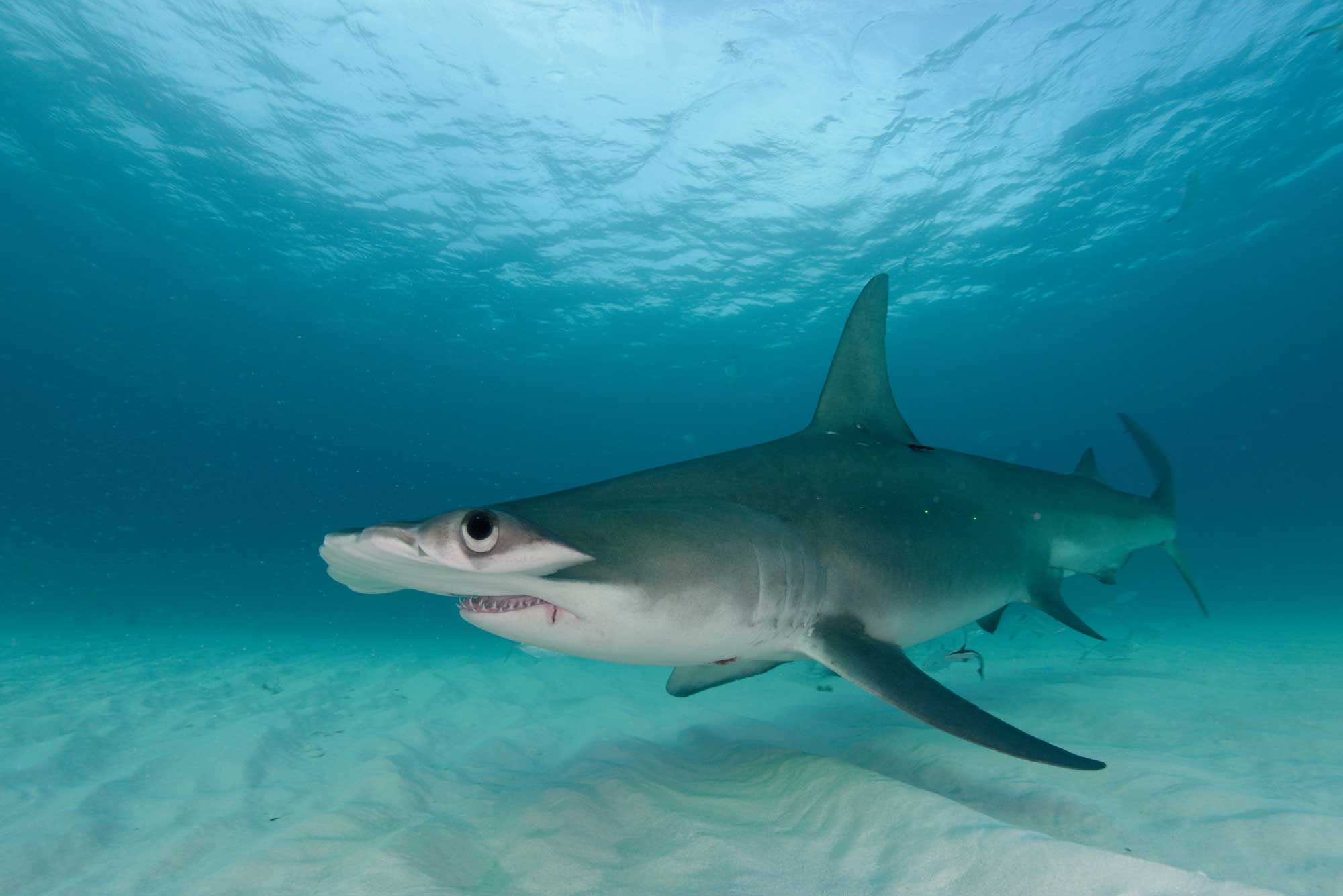
© Photo by Michael Scholl | Save Our Seas Foundation
For example, of the great hammerheads caught in commercial, bottom-longline fisheries in the north-western Atlantic and Gulf of Mexico between 1994 and 2005, 90% were dead by the time they were brought alongside the fishing vessel. This vulnerability makes hammerheads as a group very difficult to work with and they are therefore poorly studied.
So, how can we attach or implant our usual tracking devices and ask important questions about the movements and migrations of such sensitive sharks?
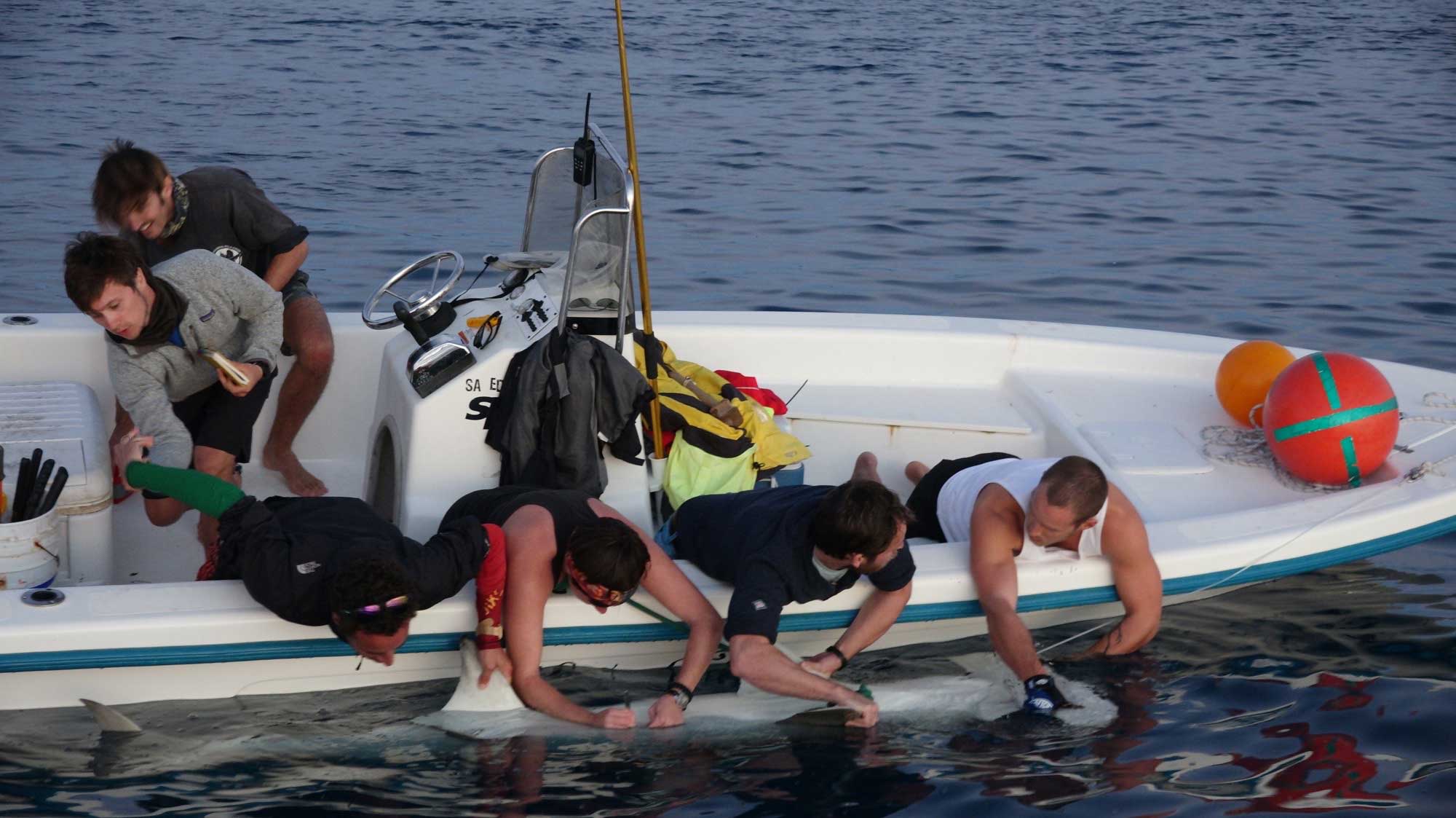
© Photo by Michael Scholl | Save Our Seas Foundation
In short, by using a basic float-fishing technique taught to us by an ex-commercial shark fisherman in Florida. After mastering this method, with his guidance, we are now able to capture, tag and safely release a great hammerhead shark in less than 15 minutes. This is how we do it:
• 0 minutes: Once hooked, the hammerhead typically swims away, diving into deeper water (where available) and towing our set-up of giant buoys. The shark’s powerful turns and deep dives cause the buoys to submerge under the waves.
• 3 minutes: We intuitively ‘feel’ the shark moving through the water column and give it more line to manoeuvre and even dive if it wants to. Then we slowly and carefully haul in the line and after a few minutes the sensitive hammerhead reaches our boat, not in a state of exhaustion.
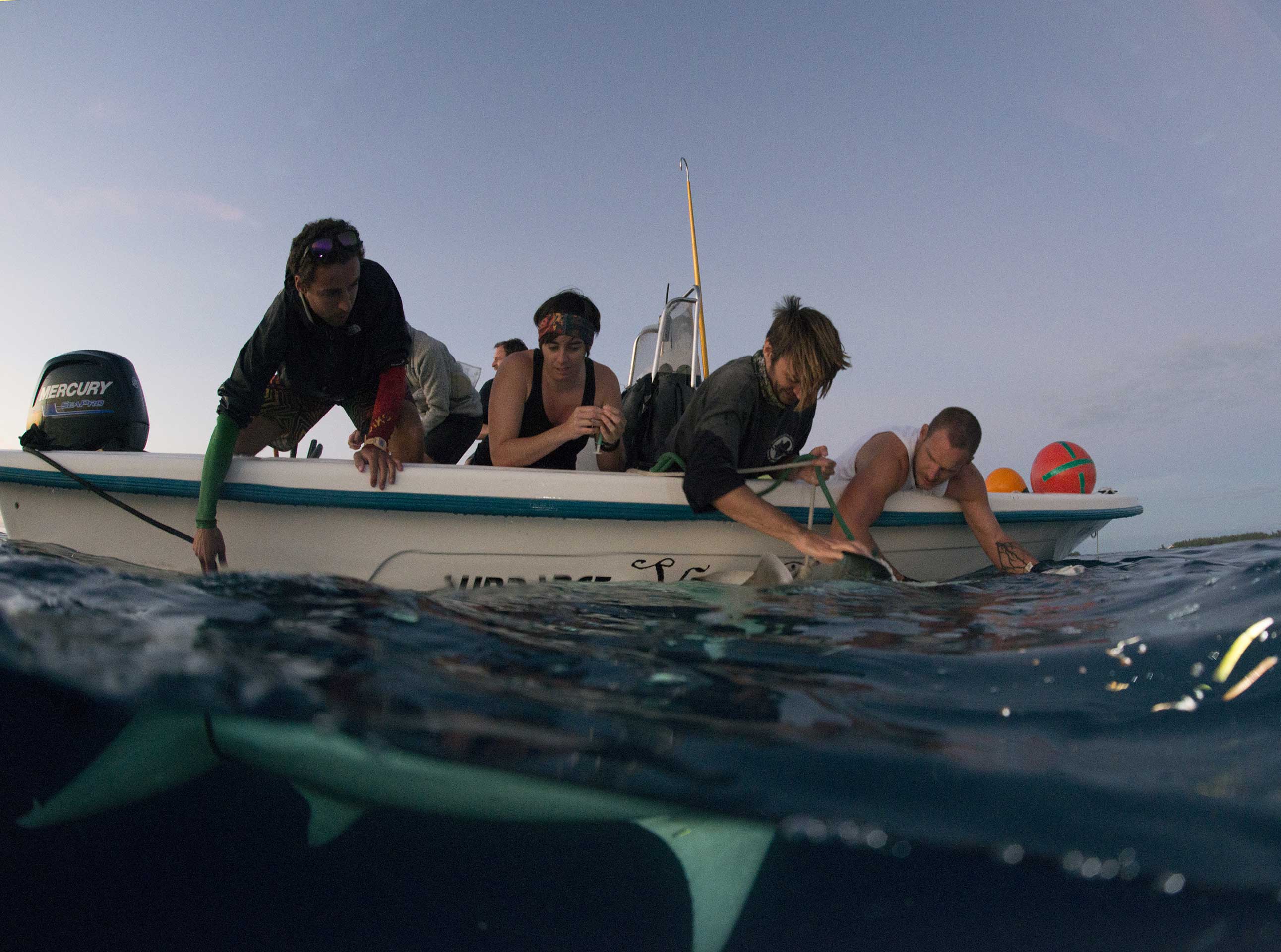
© Photo by Charlotte Sams | Bimini Biological Field Station
• 6 minutes: Once it is alongside our vessel, we point the shark into the current to ensure that water is flowing through its gills and supplying maximum oxygenation. One member of the team then holds the hammerhead’s dorsal fin to provide stability while others gently secure its tail and pectoral fins with ropes.
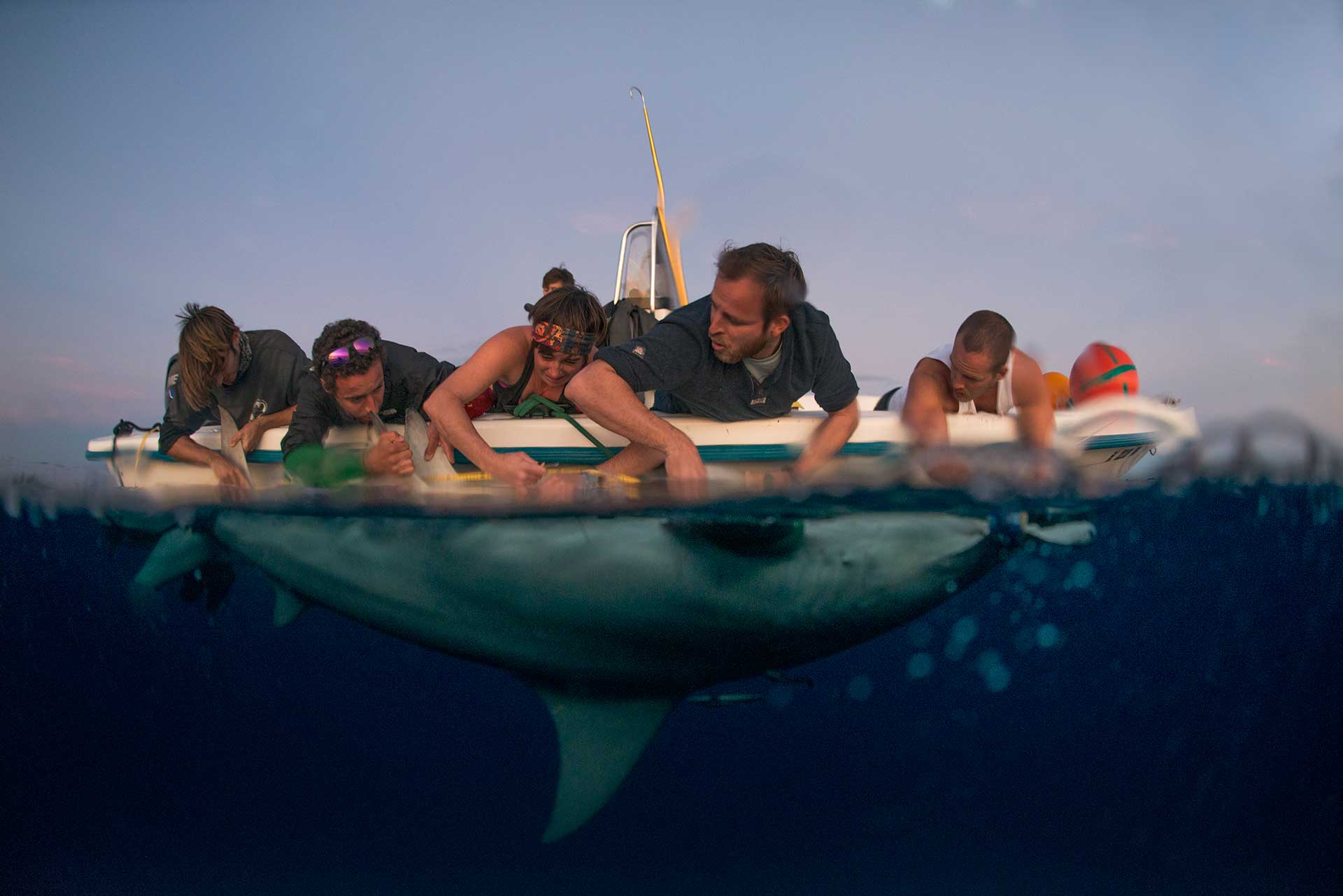
After the work up, the shark is turned right side up to be tagged. © Photo by Charlotte Sams | Bimini Biological Field Station
• 10 minutes: Another team member gently but firmly holds the shark’s head to prevent eye damage and to help turn the shark slowly over into tonic immobility so that it is calm and ready for a research ‘work-up’. Length measurements (nose to fork) are quickly taken and a 10-year acoustic tracking device is surgically implanted. Two small fin clips are then taken for DNA and stable isotope (diet) analysis.
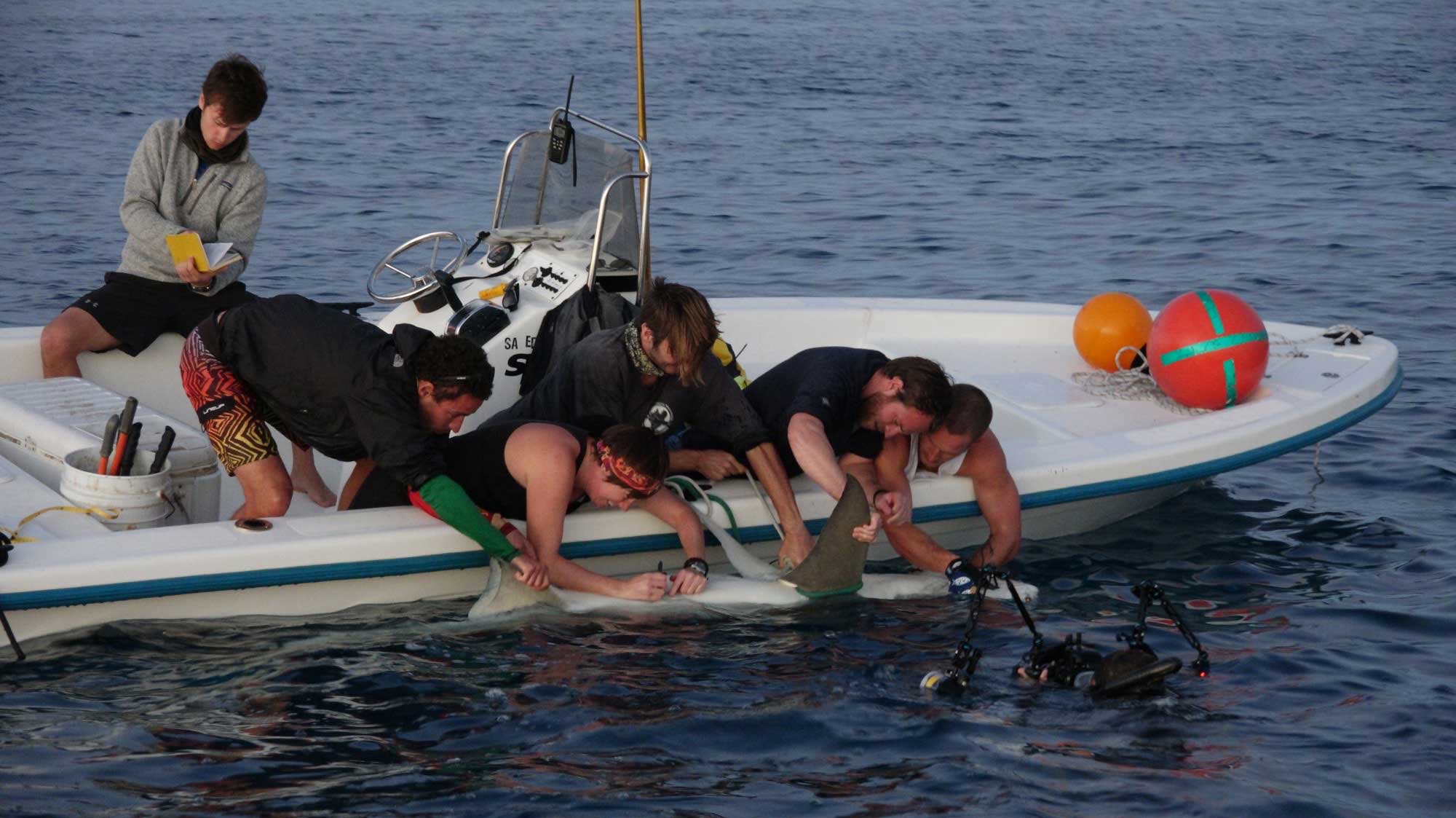
© Photo by Michael Scholl | Save Our Seas Foundation
• 13 minutes: On completion of the work-up, the shark is turned right side up, a miniature microchip PIT tag is inserted for long-term identification and an external tag (NMFS; National Marine Fishery Service) is placed on the shark for visual observations.
• 15 minutes: Finally, the hook is removed and the shark is released with strong push to set it on its way.
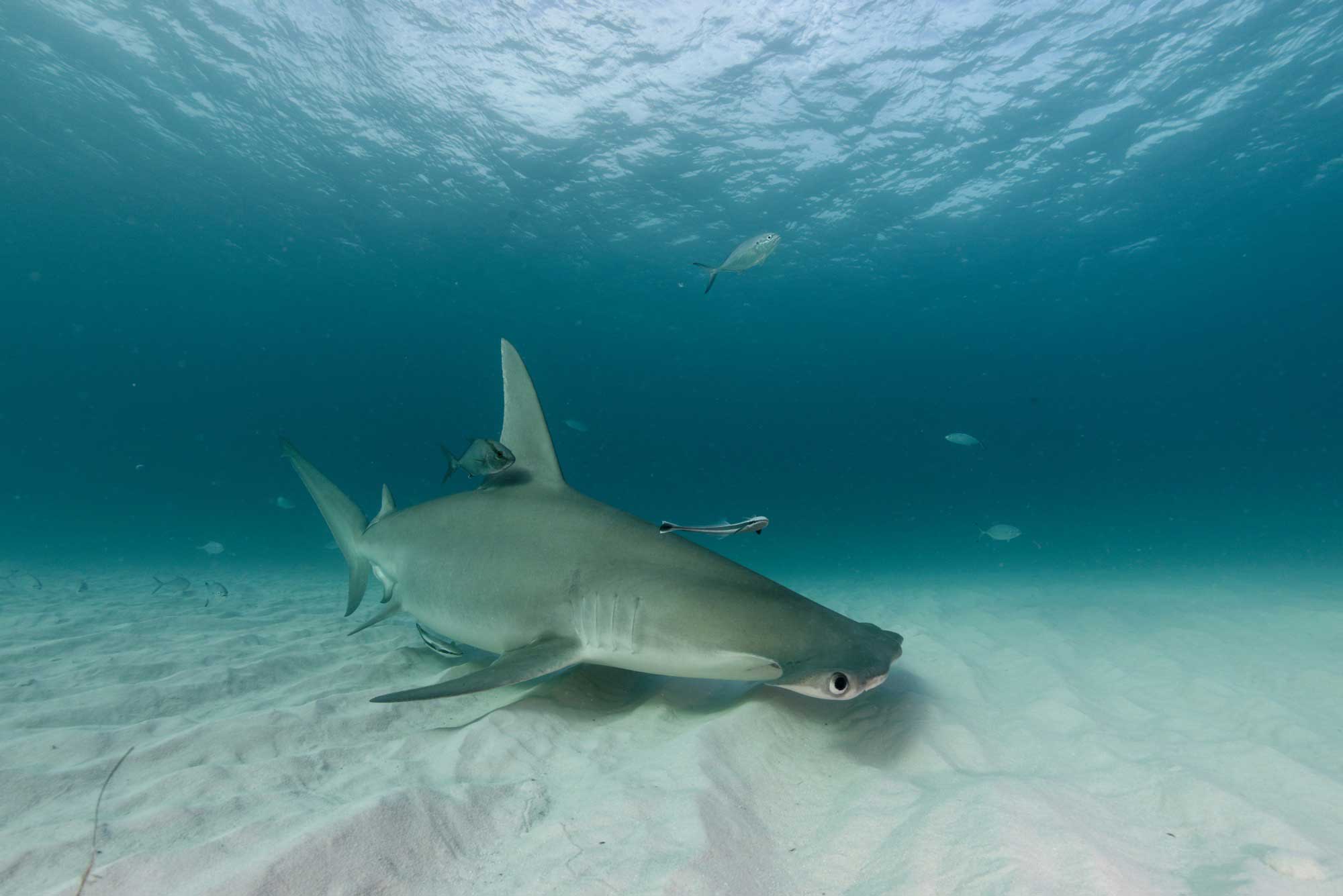
© Photo by Michael Scholl | Save Our Seas Foundation
We have now completed this rapid capture-and-tagging process on 14 separate occasions and at two locations: Bimini in The Bahamas and Florida, USA. These successful expeditions have resulted in 14 great hammerheads (all longer than 2.5 metres, or eight feet) swimming strongly away from our vessels with tracking devices implanted in them. Not only did we tag these sharks – for identification as well as tracking – but we were able to obtain tissue samples and critical, rare and, above all, accurate length measurements. We are very pleased, and proud, that all the sharks we worked with have survived, as we have detected their tags on our acoustic receiver arrays. Amazingly, within one week of tagging one of the hammerheads travelled to Delray Beach, Florida, from Bimini, a distance of about 110 kilometres (70 miles). This cross-border movement (albeit only a short distance) emphasises the importance of international collaboration within the scientific community and highlights the difficulty of conserving and managing animals that have vast geographical ranges.
Finally, I am delighted to share our successful capture technique and hope our efforts will provide critical data to help improve the conservation status of these truly incredible and majestic animals.
To keep up to date with the Bimini Shark Lab’s exciting research projects, please follow us on Facebook, Instagram and Twitter
Leave a Reply
You must be logged in to post a comment.